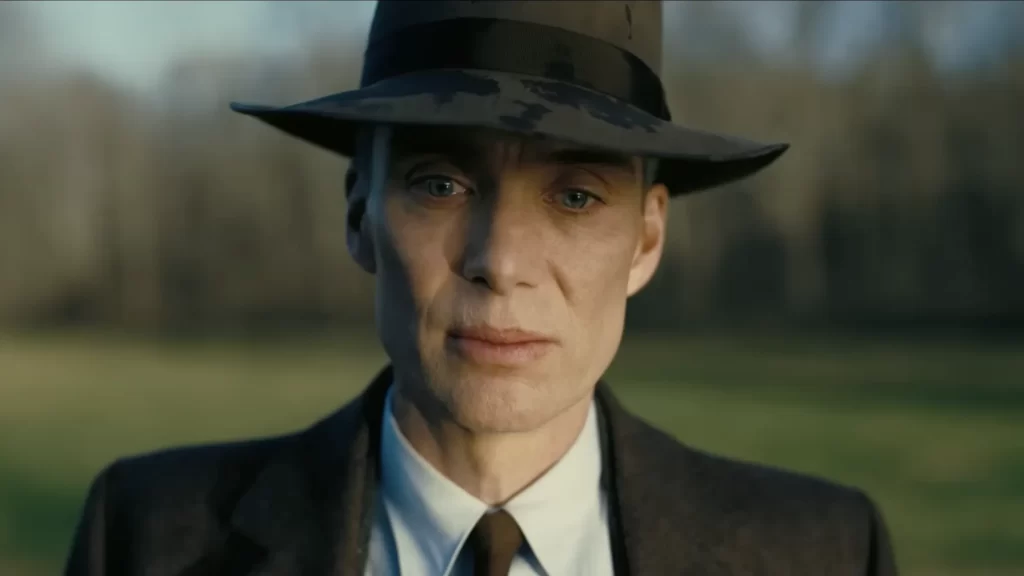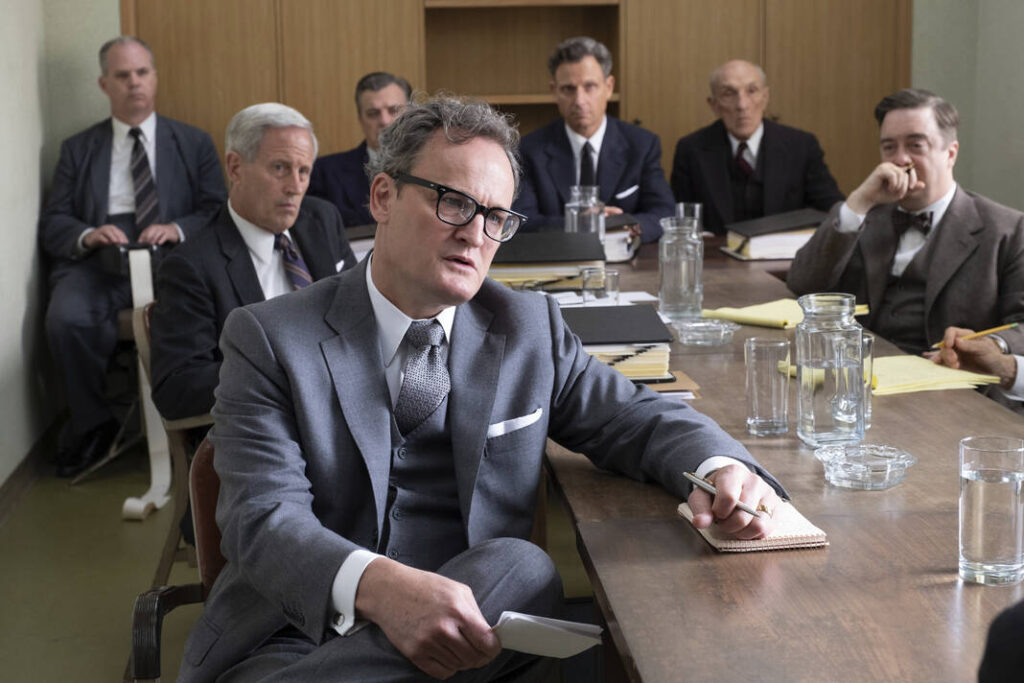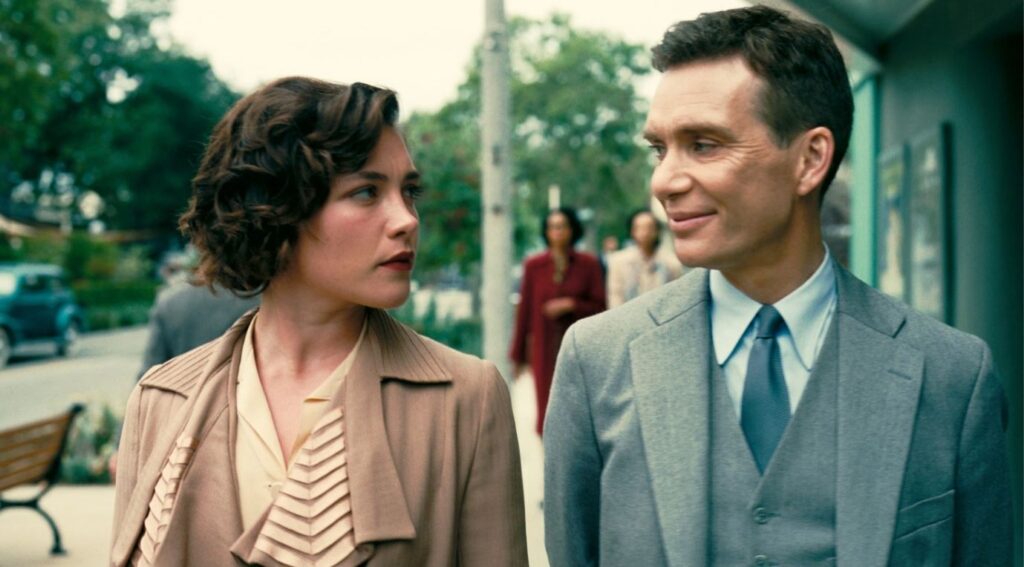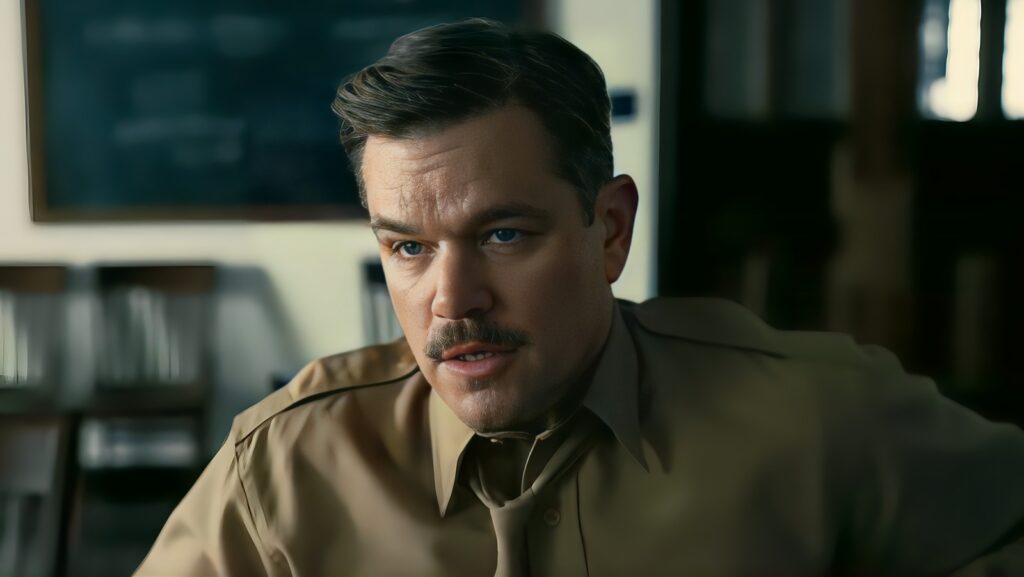
Christopher Nolan doesn’t always make movies about the end of the world, but the worlds of his movies always feel like they’re about to end. Regardless of their focus—a memory-impaired man searching for meaning, a group of con artists invading the realm of dreams, a squad of soldiers marooned on a beach—their combustible tension creates the sense that their characters’ lives are on the perpetual verge of implosion. So it’s both fitting and perverse that Oppenheimer, Nolan’s study of the (mad?) scientist who developed the atomic bomb, is his least outwardly visceral picture in decades. The stakes here couldn’t possibly be higher—at various points, people discuss the possibility of “atmospheric ignition,” a chain reaction that would engulf the planet (the odds of this, we’re assured, are “near zero”)—yet they unfold in the context of a talky, intimate chamber drama. The apocalypse will be ushered in not by motorcycle chases or time paradoxes, but by stern looks and harsh words.
If you think that sounds gentle or staid, did I mention that this was a Chris Nolan movie? Unbound from his usual need to dazzle us with eye-popping set pieces and brain-scraping premises, cinema’s most enduring populist (OK, second-most) has channeled his commercial savvy into depicting a concept that’s disarmingly straightforward: men at work. Oppenheimer is a film of grave power and sweeping intensity, made all the more propulsive by Jennifer Lame’s exacting editing and Ludwig Göransson’s majestic score, but its energy is grounded in recognizable anxieties and human emotions. It’s the product of a science-fiction filmmaker pivoting to science-fact.

Of course, the minutiae of science—the hypothesis testing, the equation balancing, the chalkboard scrawling—aren’t the sexiest subjects for a lavish IMAX treatment. And despite summoning every ounce of his visual ingenuity (one of my favorite touches: the mismatched glass bowls which house marbles representing respective quantities of harvested uranium and plutonium), Nolan cannot always imbue this material with the desired vigor. Especially during the opening act, which finds J. Robert Oppenheimer (a plugged-in Cillian Murphy) flailing in laboratories across Europe, Nolan struggles to translate his protagonist’s beautiful mind into the language of the screen. A handful of rapid inserts designed to convey complex processes (atomic collisions, celestial contractions) may be technically accurate in appearance, but that doesn’t stop them from looking like the visualizer tool on your old media player.
Yet this movie is too kinetic, too busy, for these fleeting instances to stall its momentum. Its primary narrative, which finds its titular physicist spearheading a troop of eggheads as they rush to complete a weapon of mass destruction before the Nazis can, is interlaced with a pair of quasi-judicial proceedings that take place after the war. In one, Oppenheimer risks losing his security clearance (along with his community standing) as he is interrogated by a wolfish, McCarthy-esque inquisitor (Jason Clarke, pitch-perfect) for his ties to the Communist party. In the second, which is shot in crisp black-and-white (the able cinematographer is Hoyte van Hoytema), Oppenheimer’s former colleague Lewis Strauss (Robert Downey Jr.) stands for confirmation to Eisenhower’s Cabinet, a contentious hearing that dredges up their prior associations when they both knew a white-haired fellow by the name of Einstein. Nolan’s screenplay, which he based on a book by Kai Bird and Martin Sherwin, toggles between these three timelines with deceptive rhythm, allowing them to inform one another even as they accumulate independent force. His allergy to linear storytelling became something of a punch line following the incomprehensible plot of Tenet, but here the constant cross-cutting pays off, coating the central scenes of research and development with a patina of gravitas.

Meanwhile, those R&D sequences are more alacritous and versatile than anyone could reasonably expect. Over its roomy but fast-paced three hours, Oppenheimer occupies a variety of genres. It is most obviously a historical epic, charting the course of significant real-world events with investigative precision. It is also a grand and gritty romance; after falling out with a Marxist named Jean Tatlock (Florence Pugh, riveting in a handful of scenes), Oppenheimer swiftly seduces a spoken-for biologist called Kitty (Emily Blunt), and the breadth of their relationship—the feverish courtship, the growing resentment, the solidifying loyalty—could have formed the basis of its own marital drama. (If anything, Kitty’s bout of postpartum depression is glossed over too quickly.) And the introduction of Los Alamos, the barren stretch of New Mexico desert which Oppenheimer instructs the government to convert into a bustling company town, brings with it the echoes of a western—in Kitty’s words, “All it needs is a saloon”—maximizing Nolan’s 70mm canvas with charged horseback rides and limitless landscapes.
But the species of picture that Oppenheimer resembles most, at least during its exhilarating middle hour, seems unimaginable given the severity of its content. Quite simply: It’s a sports movie.
As embodied by Murphy, who flashes lightning from his electric-blue eyes only to later cloud them with helplessness and regret, Oppenheimer must outrun his competitors in an exceedingly long-odds race. Nicknamed “Oppie” by his associates and fans, he is both maverick coach and heroic athlete, and he wields his leadership skills and prodigious natural gifts to inspire his teammates to perform feats of excellence. He even gets to make a victory speech in a gymnasium, an ostensibly celebratory occasion that Nolan—through ghostly lighting and bravura sound design—turns into a haunted reckoning.

But every MVP needs his supporting players, and Nolan has surrounded his star with an impossibly deep bench of capable character actors. The Pippen to Murphy’s Jordan is Matt Damon, who plays the straitlaced and mustachioed General Leslie Groves; from the instant he waltzes into Oppenheimer’s office and stuffs his coat into the belly of a subordinate (“Dry-clean this”), he catalyzes the movie’s transformation into an indecently playful blitz of snappy conversations. (Nolan has long been an underrated dialogue writer, and the verbal exchanges here sizzle with energy and wit.) To pay proper tribute to the rest of the splendid cast would necessitate a new ink ribbon—among its many pleasures, the film unspools as a supersized game of “Spot the White Guy” (“Hey look, it’s Dane DeHaan!” “Wait, is that Tony Goldwyn?”)—so I’ll limit myself to three names: David Krumholtz as Oppenheimer’s wise but weary confidant, Alden Ehrenreich as Strauss’ increasingly suspicious aide, and the aforementioned Clarke, whose prosecutor is so flagrantly biased, he doesn’t chew the scenery so much as swallow the rules of evidence.
And then there is Pugh, whose prickly presence nudges Oppenheimer into a different emotional register. The love affair between Oppenheimer and Tatlock is a whirlwind of passion and confusion—it’s where Nolan chooses to drop the famous phrase, “Now I am become death, destroyer of worlds,” in a moment so absurd as to be sublime—and its early disintegration foreshadows the human costs that accompany the main character’s relentless zeal. It is also responsible for the movie’s single most spectacular scene: a brief piece of testimony in which Oppenheimer’s febrile imagination is suddenly and breathtakingly literalized, and a recitation of past transgressions morphs into an act of carnal shame.

It might sound odd that my favorite sequence in the Chris Nolan A-bomb flick is one that takes place in a sterile conference room. I certainly don’t mean to diminish the scale of the director’s achievement, which marries boisterous image-making with scientific rigor; his staging of the fateful “Trinity test,” in which Oppenheimer and his crew finally make good on their words and turn theory into practice, is a masterfully choreographed set piece that builds suffocating suspense despite our knowledge of the outcome, and which makes brilliant use of light, sound, and color. But what is most explosive about Oppenheimer is not its display of technological might, but its examination of that might’s fiery aftermath.
Nolan is not an especially subtle filmmaker—don’t worry, he’ll be sure to identify that junior senator from Massachusetts by name—but he’s smart enough not to reduce this movie to a shrill screed. (Any fear that he’s made a portrait of lionizing hagiography is put to rest early on, when a spiteful Oppenheimer poisons one of his professor’s snacks.) In its third act, which cracks open the splintering fissures between Strauss and Oppenheimer, it manages to feel seismic and targeted at once. Without flinching, it grapples with weighty issues: the depravity of the Red Scare, the legitimacy of nuclear deterrence, the crude cost-benefit analysis of global warfare. Yet in doing so, it never loses sight of its characters, and of how conflicts of such enormity can be born of petty jealousies and fragile male egos.

On the topic of selfishness: There is a greedy, irrepressible part of my psyche that wishes an artist as talented and imaginative as Nolan would turn away from history, and would instead focus exclusively on works of his own concoction—the vertiginous spirals of Inception, the galactic sprawl of Interstellar, the sinewy showmanship of The Prestige. (As for Tenet, I will never understand it, but I will always treasure its exquisite craft and maniacal ambition.) All the same, I applaud Oppenheimer for emphatically taking place in our own world. Unlike in Dunkirk, which branded Nazis with the anodyne label “the enemy,” here Nolan is frank about geopolitical realities; at one point, Oppenheimer declares that America’s “one hope” is anti-Semitism, suggesting that Hitler’s bigotry will rob him of some of Germany’s greatest minds and distract him from making scientific progress.
Any resonance this theme may have relative to the climate of today is beside the point. What matters about Oppenheimer is its mass—its quality of weight and permanence. It is a ginormous movie, full of life and pain and humor along with searing visuals and intersecting timelines and provocative ideas. The prospect of harnessing such a multitude of elements into a digestible motion picture is daunting, but the heedless confidence it requires is exactly what Christopher Nolan is for. Like Robert Oppenheimer, the giant of history whom he admires and admonishes, he sets his mighty brain to work and, with furious discipline and wild invention, turns theory into practice.
Grade: A-
Jeremy Beck is the editor-in-chief of MovieManifesto. He watches more movies and television than he probably should.
